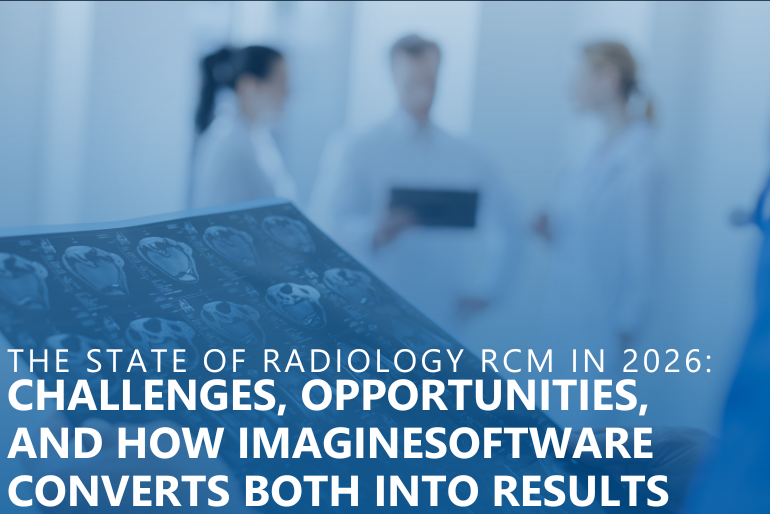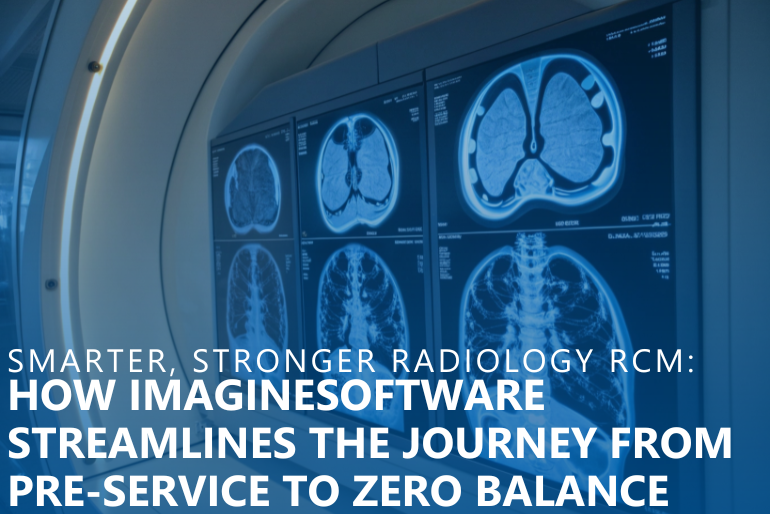If you’re a medical billing professional, traditional point-solution technology for claims processing, denial management, and patient payment solutions are most likely very familiar to you. However, with the current trends in healthcare technology combining to include a rise in artificial intelligence and machine learning, providers now have access to innovative, all-in-one IT platforms that are revolutionizing their workflows. Instead of narrowly focused point solutions, a single platform can now provide a comprehensive, integrated solution tailored to meet an organization’s unique needs while also offering core benefits like simplifying tech stacks and providing full transparency across an entire enterprise. In this blog post, we will discuss why it is beneficial for healthcare organizations to use one single vendor for their revenue cycle needs, spotlighting five key advantages such as streamlining processes and boosting your bottom line.
“Providers see challenges with vendor proliferation and an increase in tech stack complexity poor EMR integration with existing tech stacks as some of the top pain points with their existing tech stacks, further illustrating the unique challenge of the current environment, causing healthcare organizations to refocus on proven, “all-in-one” platforms.
Platform Over Point-Solutions
The healthcare industry has experienced a significant shift when it comes to optimizing revenue. Instead of relying on singular point-solutions or disparate systems, healthcare organizations are increasingly taking advantage of all-in-one platforms that integrate multiple support processes in one place. Automated revenue cycle management and healthcare revenue optimization services come together as part of an interconnected platform, providing end-to-end coverage for essential healthcare operations. Organizations are able to reduce cost and complexity associated with deploying multiple standalone solutions and benefit from more reliable data architecture that integrates correctly and seamlessly across functions. This platform approach is quickly becoming the standard for effective healthcare organizations.
Seamless Workflow & Patient Engagement
Automating medical billing and payment processes within one single platform streamlines operations from pre- or point-of-service to zero-balance – for the patient and associated providers. Not only does it provide more accurate and consistent record-keeping, but the transition to one platform creates customizable, real-time reporting, making data easier to analyze, understand, and base business decisions from. Additionally, improved communication between providers and patients is possible on one centralized platform, helping with coordinating care, expediting services, and processing insurance/payments. Automation further simplifies matters; with fewer manual processes, accuracy increases while potential discrepancies lower, resulting in greater trust in both provider-patient relationships as well as financial transactions. Last but not least, transitioning to one vendor allows for visibility of total cost control and trending information that can be used to assess opportunities for continuous improvement within the existing infrastructure. Automating medical billing and payment processing on one platform is an advantageous way to maximize efficiency.
ImagineOne™
ImagineSoftware’s all-in-one revenue cycle management platform.
Unified Transparency
A single vendor provides transparency across an entire enterprise, providing a unified focus with all data, configurable reports, and applications under the same umbrella, and in turn, offers organizations a direct line of customer support across all their revenue cycle management technology. This allows for the streamlining of operations, ensuring consistency and profitability. An integrated system also helps to reduce costs while increasing productivity and transparency, by offering businesses detailed real-time reporting and improved customer experience through transparency. By implementing a single vendor solution, enterprises can aim to increase transparency across their business, fueling data-driven decisions and maintaining control of analytics.
Tech Stacks, Simplified
Many organizations find that over the years, they have accumulated a wide range of software products to help address various stages of the revenue cycle or assist in staying up-to-date with ongoing healthcare regulation changes. Many of these technologies could have been selected and implemented by predecessors who are no longer with the company, leaving behind settings that are unclear and multiple workarounds, wasting time for your staff. It is also often difficult for IT leaders to manage updates and ensure all products are secure while keeping your patient data protected and compliant with the Health Insurance Portability and Accountability Act of 1996 (HIPAA), especially when they are having to work with different contacts from multiple vendors. By simplifying tech stacks into a single-source billing and RCM management system, organizations can ensure that their revenue management is easier to maintain while avoiding costly interfaces and associated upkeep.
Cost Effective
Optimizing the healthcare revenue cycle under a single platform, from pre- or point-of-service through to zero balance, is an increasingly popular methodology for medical organizations to streamline their processes, improve quality of care, and optimize costs all at once. By using one provider for all aspects of health care, including automating medical billing and protecting patient information, organizations can save money through increased efficiency and easier communication. Not only does this guarantee more consistent services between departments and providers, but it also offers much-needed consistency in results due to fewer misunderstandings. Groups that choose to consolidate their technologies and shed their point solutions will see cost savings almost immediately, as well as organizational and personnel efficiencies in the long run.
Decrease the cost of end-to-end revenue cycle operations by up to 75% and free up resources for patient care.
Learn More about ImagineOne™
In conclusion, transitioning to one vendor for healthcare revenue cycle optimization can be a great way to maximize efficiency and increase transparency across your organization. Automating medical billing and payment processing streamlines processes with a single vendor partner can save time and money in the long run. If you are looking for ways to optimize your healthcare organization’s RCM costs, a single-source integrated platform may be the perfect solution. Contact us today if you need help implementing this cost-saving strategy into your operations!
Source: Bain & Company. (2022). 2022 Healthcare Provider IT Report. Post Pandemic Investment Priorities



